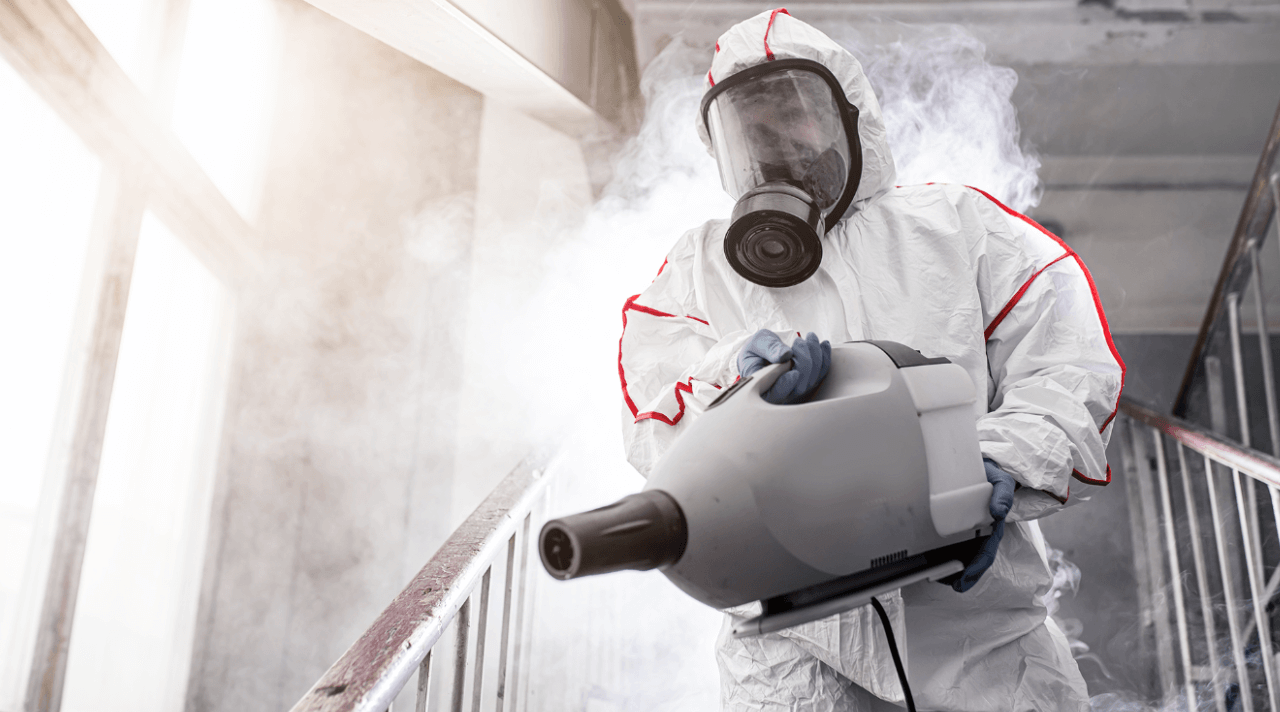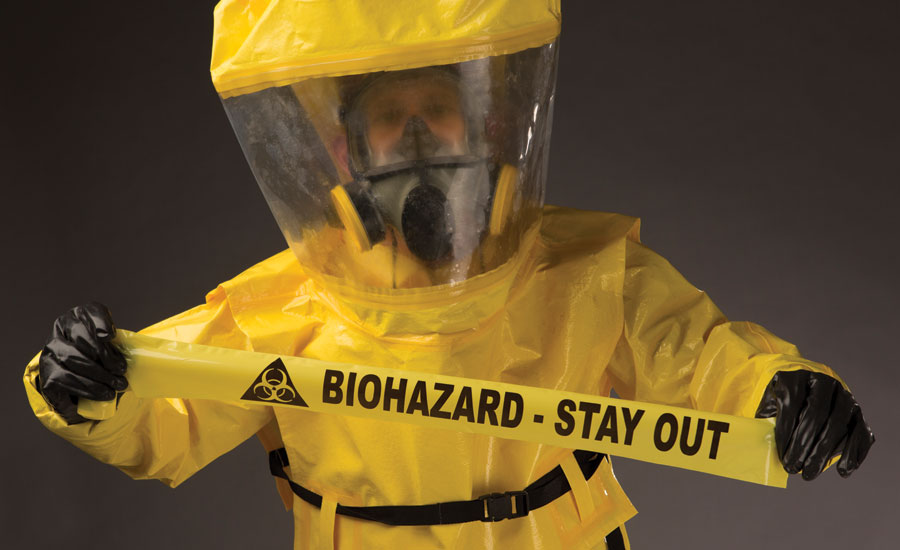Clandestine Lab Cleanup: Comprehensive Decontamination for Hazardous Sites
Clandestine Lab Cleanup: Comprehensive Decontamination for Hazardous Sites
Blog Article
Expert Biohazard Cleansing and Purification for Blood, Bodily Fluids, and Hazardous Materials
In the realm of biohazard cleansing and decontamination for blood, physical fluids, and unsafe products, accuracy and know-how are paramount. The potential wellness dangers connected with exposure to biohazards emphasize the vital need for precise handling and extensive clean-up. Specialized training equips experts with the expertise and abilities needed to deal with these harmful situations properly. Nonetheless, it is not just regarding tidying up; the importance of utilizing appropriate purification strategies can not be overstated. As we browse the detailed landscape of biohazard clean-up, understanding the subtleties of guidelines, conformity, and the customized devices at play comes to be important in guaranteeing a risk-free and detailed decontamination process.
Health And Wellness Threats of Biohazard Exposure
Direct exposure to biohazards poses significant health dangers that can result in extreme effects for individuals and neighborhoods alike. Biohazards incorporate a wide variety of organic substances, consisting of blood, bodily liquids, mold and mildew, bacteria, viruses, and various other potentially infectious products. When individuals come into contact with these biohazards, whether through mishaps, improper handling, or ecological direct exposure, they encounter the threat of having serious diseases or conditions.
One of the primary health and wellness risks linked with biohazard exposure is the transmission of infectious illness. Bloodborne pathogens such as HIV, liver disease B and C, and numerous microorganisms can be present in biohazardous materials, positioning a direct danger to human health and wellness. Breathing in airborne biohazards like mold spores or entering into contact with contaminated surfaces can additionally cause respiratory system concerns, allergic reactions, and other damaging wellness results.
Additionally, biohazard direct exposure can have lasting wellness ramifications, with some diseases showing up years after the first get in touch with (Blood Cleanup). Therefore, it is essential to focus on correct biohazard cleansing and decontamination to reduce these wellness dangers and ensure the safety of communities and people

Specialized Training for Biohazard Cleaning
When it involves managing biohazard cleaning successfully and safely, specialized training plays an essential duty in making sure appropriate decontamination procedures are followed. Biohazard cleaning needs specific understanding and abilities to effectively minimize risks connected with bloodborne virus, bodily liquids, and dangerous products. Experts trained in biohazard cleanup go through strenuous direction on just how to securely take care of, get rid of, and dispose of biohazardous materials to avoid contamination and direct exposure.
Specialized training for biohazard clean-up covers an array of vital subjects, consisting of appropriate individual safety equipment (PPE) use, bloodborne virus recognition, purification strategies, and dangerous waste disposal protocols. Individuals trained in biohazard clean-up are furnished with the required expertise to assess contamination levels, identify prospective risks, and apply ideal cleaning treatments in compliance with regulative requirements.
Continual training and education and learning are paramount in the area of biohazard clean-up to remain upgraded on the current decontamination innovations, security methods, and laws. By buying specialized training, biohazard cleaning professionals can successfully reply to emergency cleaning scenarios and safeguard both public health and the setting.
Relevance of Appropriate Purification Techniques
Making use of appropriate purification strategies is crucial in biohazard cleaning to efficiently minimize and remove dangerous products wellness risks. Reliable decontamination not only Learn More ensures the removal of noticeable traces of blood, bodily fluids, and other biohazards however additionally targets unseen microorganisms that might pose serious health and wellness hazards otherwise appropriately eliminated. By complying with stringent decontamination methods, trained professionals can substantially lower the threat of direct exposure to hazardous microbes, viruses, and bacteria that might result in infections or illness.
Correct decontamination techniques involve using customized devices and anti-bacterials that are especially made to reduce the effects of biohazards properly. Comprehensive cleaning and sanitation of infected locations are vital to stop the spread of microorganisms and make sure a secure environment for passengers. Additionally, the right disposal of biohazardous waste adhering to decontamination procedures is crucial in avoiding contamination of other surface areas or people.

Tools and Devices for Safe Cleanup
The proper equipment and devices play an essential function in ensuring the efficient and risk-free cleanup of biohazardous materials. When handling blood, bodily liquids, or harmful products, biohazard cleansing professionals count on specialized equipment to reduce exposure risks and completely decontaminate the affected location. Personal safety devices (PPE) such as gloves, masks, coveralls, and safety glasses are crucial to safeguard against direct contact with potentially transmittable materials. Additionally, biohazard cleaning sets having anti-bacterials, absorbent materials, and biohazard bags are made use of to securely contain and dispose of infected products. Blood Cleanup.
Advanced cleaning tools like hospital-grade anti-bacterials, HEPA-filtered vacuums, and misting equipments are used to sterilize surfaces and remove biohazards effectively. Specialized equipment such as sharps containers and biohazard waste disposal bins are made use of to safely handle sharp objects and biohazardous waste products. By using the appropriate equipment and devices, biohazard cleansing specialists can make sure an extensive clean-up process that focuses on security and lessens wellness threats for both workers and residents of the damaged space.
Laws and Conformity in Biohazard Cleaning
Proper adherence to policies and conformity standards is vital in biohazard cleaning to make sure the safety and here security of both workers and the setting. Government agencies such as OSHA (Occupational Safety And Security and Wellness Management) and the EPA (Epa) have developed specific guidelines for biohazard cleanup treatments to lessen health and wellness risks and ecological contamination. These policies cover a series of aspects consisting of the handling, transportation, and disposal of biohazardous materials, in addition to the essential training and protective equipment needed for personnel associated with the cleanup procedure.
Biohazard cleaning companies must remain up-to-date with these policies to guarantee that their operations satisfy the required safety and security criteria. Failing to follow these laws can cause extreme repercussions, consisting of penalties, lawsuit, and threatening the wellness of individuals and the atmosphere. By adhering to rigid policies and conformity actions, biohazard cleaning business can successfully reduce dangers and guarantee a safe and extensive cleanup procedure for all celebrations involved.
Final Thought
To conclude, biohazard cleaning and purification call for specific training, proper strategies, and adherence to guidelines. Direct exposure to blood, bodily liquids, and hazardous materials positions significant health and wellness threats, making it important to make use of the right devices and tools for secure cleaning. By following strict procedures and standards, professionals can you can try these out effectively alleviate the risks linked with biohazard direct exposure and make sure the safety of both themselves and others.
As we browse the intricate landscape of biohazard clean-up, comprehending the nuances of regulations, compliance, and the specialized equipment at play becomes vital in making sure a risk-free and detailed decontamination process. (Blood Cleanup)
When it comes to handling biohazard clean-up successfully and securely, specialized training plays a fundamental role in making certain proper decontamination treatments are complied with.Utilizing correct decontamination methods is essential in biohazard clean-up to properly decrease and get rid of unsafe products wellness risks. Additionally, biohazard cleansing packages consisting of disinfectants, absorbent materials, and biohazard bags are made use of to securely get rid of and consist of of polluted products.
Federal government agencies such as OSHA (Occupational Security and Wellness Administration) and the EPA (Environmental Protection Company) have established particular standards for biohazard cleaning procedures to decrease health and wellness threats and environmental contamination.
Report this page